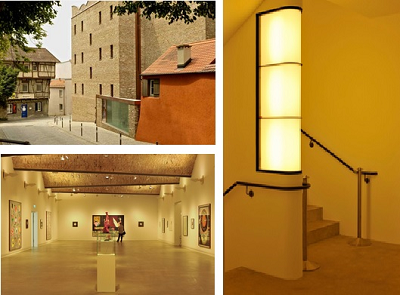Deep geothermal energy
In terms of its sustainability, the use of deep geothermal energy is a borderline case: the heat contained within the earth’s interior is practically inexhaustible but its use as an energy source is not without problems. The drilling of deep holes as well as active injection of water under high pressures can result in seismic activity and, in turn, lead to structural damage in buildings. Additionally, the soil around the extraction site eventually cools down, meaning that the original source will “run dry.” Natural regeneration via ground heat may then take hundreds of years. Nonetheless, deep geothermal far more sustainable than the use of fossil fuels and can also be employed to cover the remaining energy demand in Passive Houses.
The Kunstmuseum, an art museum in Ravensburg, Germany, makes use of deep geothermal energy. The building is heated by a 40cm thick concrete core ceiling, supplied by deep borehole heat exchangers and a gas absorption heat pump. This system is reversible and can also be efficiently used for cooling. This Certified Passive House Building has a ventilation system with both heat and moisture recovery.
See the database entry for the Kunstmuseum Ravensburg

